USS Leonis (AK-128) was a Crater-class cargo ship in service with the US Navy in World War II. It was the only ship of the Navy to have borne this name, Latin for "of a lion", presumably referring to the northern constellation Leo.

USS Aldebaran (AF-10), the lead ship of her class of stores ship is the only ship of the United States Navy to have this name. She is named after Aldebaran, a star of the first magnitude in the constellation Taurus.

USS Boreas (AF-8) was an Arctic-class stores ship acquired by the United States Navy after World War I. She served with distinction during World War II, supplying food and other supplies to ships and installations in the combat zones of the Pacific Theater.

USS Pastores (AF-16) was a Pastores class store ship acquired by the U.S. Navy during World War I and re-acquired during World War II. Pastores served as a stores ship, responsible for delivering supplies to military personnel in combat and non-combat areas. She served in both World War I and II, and was awarded one battle star during World War II.

USS Arctic (AF-7) was an Arctic-class stores ship acquired by the United States Navy shortly after World War I, which saw extensive service in World War II. She served in the Pacific Ocean, delivering food and household items to ships and bases.

USS Glacier (AF-4) was a Glacier-class stores ship acquired by the U.S. Navy for use in the Spanish–American War. She served again during World War I in the dangerous North Atlantic Ocean, delivering general goods and ammunition to American Expeditionary Force troops in Europe.

USS Calamares (AF-18) was a cargo ship acquired by the U.S. Navy for service in World War I. When World War II occurred, she was again re-commissioned into service, providing goods to units in the various oceans of the world.

USS Triangulum (AK-102) was a Crater-class cargo ship commissioned by the US Navy for service in World War II. Triangulum was named after the constellation Triangulum. She was responsible for delivering troops, goods and equipment to locations in the Asiatic-Pacific Theater.

USS Ganymede (AK-104) was a Crater-class cargo ship commissioned by the US Navy for service in World War II. She was responsible for delivering troops, goods and equipment to locations in the war zone. Named after the largest of the moons of Jupiter, Ganymede was the only ship of the Navy to bear this name.
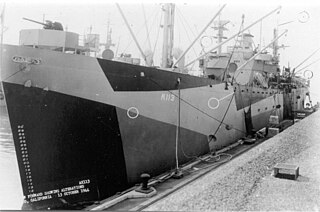
USS Rutilicus (AK-113) was a Crater-class cargo ship commissioned by the US Navy for service in World War II. She was responsible for delivering troops, goods and equipment to locations in the Asiatic-Pacific Theater.
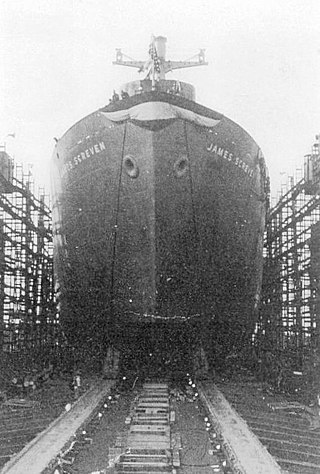
USS Shaula (AK-118) was a Crater-class cargo ship, converted from a Liberty Ship, commissioned by the US Navy for service in World War II. She was first named after James Screven, an American general during the American Revolutionary War. She was renamed and commissioned after Shaula, the second-brightest star system in the constellation of Scorpius. She was responsible for delivering troops, goods and equipment to locations in the war zone.
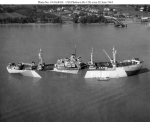
USS Phobos (AK-129) was a Crater-class cargo ship commissioned by the U.S. Navy for service in World War II. She was responsible for delivering troops, goods and equipment to locations in the war zone.

USS Ascella (AK-137) was a Crater-class cargo ship commissioned by the US Navy for service in World War II. Ascella was named after Ascella, a star in the constellation Sagittarius. She was responsible for delivering troops, goods and equipment to locations in the Asiatic-Pacific Theater.

USS Hyades (AF-28) was the lead ship of her class of stores ships acquired by the U.S. Navy for service in World War II. Her task was to carry stores, refrigerated items, and equipment to ships in the fleet and to remote stations and staging areas.

USS Adria (AF-30) was an Adria-class stores ship in service with the United States Navy from 1944 to 1954. She was scrapped in 1977.

USS Karin (AF-33) was an Adria stores ship in service with the United States Navy from 1945 to 1958. She was into commercial service in 1969 and was scrapped in 1987.
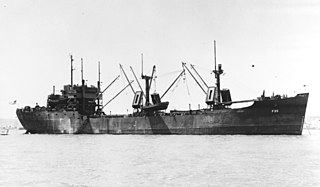
USS Latona (AF-35) was an Adria-class stores ship in service with the United States Navy from 1945 to 1949. She was scrapped in 1973.
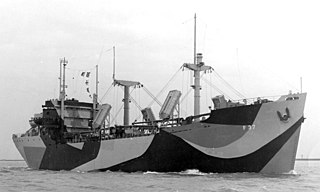
USS Malabar (AF-37) was an Adria-class stores ship in service with the United States Navy from 1945 to 1955. She was scrapped in 1977.
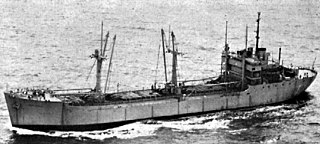
USS Bondia (AF-42) was an Adria-class stores ship in service with the United States Navy from 1945 to 1946 and from 1951 to 1973. She was scrapped in 1974.
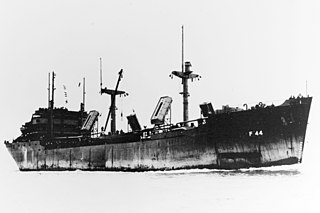
USS Laurentia (AF-44) was an Adria-class stores ship in service with the United States Navy from 1945 to 1946 and from 1950 to 1970. She was scrapped in 1973.



















